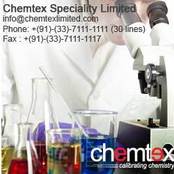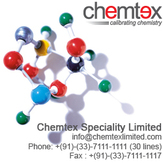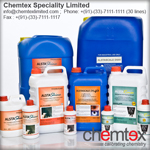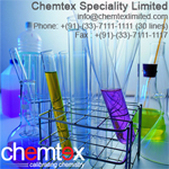 _ Glycol Brine in an industrial cooling and heating process terminology is referred as coolant or heat transfer fluid(HTF) or the common fluid that is used in large installations for transporting heat from one place to another. Chiller Circuit Glycol Brine is used for lowering the freezing point and enhancing the heat transfer efficiency.
Glycol Brine Solutions are of various 3 types used in today's world for heat transfer & thermal storage, such as Glycol based brine such as mono ethylene glycol (MEG), propylene glycol (PG) and diethylene glycol (DEG). Inhibited Brine solutions of these brine solutions are also available that provides protection of metal against crevice and cavitation corrosion.
Synonyms :
Ethylene dihydrate, 1,2-Ethanediol, 1,Ethylene Glycol
Mono Ethylene Glycol Brine (MEG) (also referred as Ethylene Glycol) is an organic compound having molecular formula CH2OHCH2OH. Mono Ethylene Glycol Brine (MEG) is widely used as an antifreeze and automotive heat transfer fluid. It is clear, colorless and practically odorless liquid completely soluble in water.
Specification :Chemical Type : Mono Ethylene Glycol Brine (MEG)Form : LiquidAppearance : Clear, Colorless LiquidAssay as (CH2OHCH2OH) : 99.95%Specific Gravity : 1.11Molecular Wt. : 62.07 g/molSolubility : Completely Soluble in Water Storage Protocols : · Mono Ethylene Glycol Brine (MEG) is slightly hygroscopic in nature & must be stored under conditions so that contamination with water and adsorption of moisture are prevented. · The storage temperature of Mono Ethylene Glycol Brine (MEG) is not critical, in that there will be no hazardous conditions created by storage of this product at any ambiance temperature likely to be encountered. It should be noted however for product quality reasons the storage temperature should not go above 40oC. At below freezing temperatures the product viscosity might become too high for transfer from the storage containers with the pumps available. · Mono Ethylene Glycol Brine (MEG) is a stable chemical and is not expected to deteriorate significantly with time provided it is stored as indicated. As a good industrial practice, it is however recommended that it should not be stored for periods longer than 6months. · Bulk tanks should be of HDPE material, non-rusted stainless steel or mild steel. Hoses should be of polypropylene or Stainless Steel. Mono Ethylene Glycol Brine (MEG) / Inhibited Mono Ethylene Glycol Brine (Inhibited MEG) is an industrial coolant, antifreeze heat transfer fluid. The inhibitor package is designed to protect brass, copper, solder, steel, cast iron, aluminum and other metals commonly found in the industrial cooling and heating systems.At the last but not the least we can conclude with this belief that Chemtex is one of the leading international ISO 9001:2008 certified companies which provides its clients Inhibited Ethylene Glycol and Inhibited Propylene Glycol over the last few decades and will continue in near future. Inhibited Mono Ethylene Glycol and Mono Ethylene Glycol is used in chillers, glycol systems, boiler systems, solar panels, and many other water based systems as well as Inhibited Propylene Glycol and Propylene Glycol. It is usually produced from either propylene oxide or glycerol. For Chemtex’s Inhibited Propylene Glycol, Mono Ethylene Glycol and other chemicals contact us at +91-33-7111-1111 or [email protected] .
 _ Engine Coolant or Radiator Coolant is based on Inhibited Ethylene or Propylene Glycol solution or concentrate. These are used by all vehicles for heat transfer. Antifreeze Coolant should be efficient in transferring the heat as well as preventing scale and corrosion of the radiator and the engine cooling system. This coolant can also function as antifreeze in low temperature brine chilling plant application (also known as Brine). Radiator Coolant helps the engine to give optimum performance. Chemtex range of Industrial Coolants replaces all products of DOW FROST ( Heat Transfer Fluid based on Propylene Glycol), DOW THERM (Heat Transfer Fluid based on Ethylene Glycol), NORKOOL and AMBITROL range, more economically and effectively. Inhibited Propylene Glycol Brine ( Inhibited PG) is used as an industrial coolant, antifreeze heat transfer agent. The corrosion inhibitor package in the PG is designed to protect brass, copper, solder, steel, cast iron, aluminum and other metals commonly found in the industrial cooling and heating systems. The effectiveness of Inhibited Propylene Glycol Brine (Inhibited PG) in preventing corrosion has been proven in extensive laboratory and in actual service tests. Using Inhibited Propylene Glycol Brine (Inhibited PG) for heat transfer applications instead of brine solutions or uninhibited propylene glycol reduces maintenance costs and improves heat transfer efficiency. Chemtex's Inhibited Propylene Glycol Brine (Inhibited PG) outperforms Dowfrost and Ambitrol range of inhibited propylene glycol based heat transfer fluids Applications : Beverages & Juices, Breweries & Distilleries, Canneries & Preservers, Packaged Food Freezing, Pharmaceutical & Bulk Drugs, Fish Processing Units, Poultry Processing Industry, Heating and Cooling Systems, Thermal Storage System, Snow Melting and Refrigeration, Ice Skating Rinks, Vegetable Oil Industry, Ice Manufacturer, Cold Storage Systems Specification : Chemical Type : Inhibited Propylene Glycol Brine ( Inhibited PG) Form : Liquid Appearance : Clear, Colorless Liquid Assay as (HO-CH2CH2(OH)-CH3) : 96.0% - 97.0% Concentration of Inhibitor : 3.0% - 4.0% Solubility : Completely Soluble in Water Brine or glycol coloring agent is a unique leak detecting instrument that is very easy and economical to use. Small amount of ALSTA GLO added to the system turns the whole glycol, brine or coolant solution to turn bright florescent green color. This color is unique in the way that it starts glowing in presence of UV light. Now have comes two questions in mind - Why? And How? Especially when Propylene Glycol or Inhibited Propylene Glycol is used as heat transfer agent in food, beverage or brewery industries, there lays a possibility of contamination even though Propylene Glycol is harmless to our health up to a certain level. But to keep ourselves on the safer side of the problem, something has to be done to detect the leakage of Glycol from the system. But we are fortunate enough that it had already done. Chemtex’s continuous innovation blesses us with a perfect blend of Inhibited Mono Ethylene Glycol or Inhibited Propylene Glycol and a colored leak detecting media. This media turns the Glycol solution to fluorescent green or orange colored solution. So, whenever there is any leakage from Glycol systems, it will be visible during the daylight and even in the night time due to its fluorescent color. The leak detection dye also has a very special feature that can make it very easy to detect small pinhole punctures or leakages at its very nascent stage before it takes a shape of a large puncture or burst and cause production and maintenance havoc. This special mechanism of the Brine leak detection dye is its ability to glow in the dark in presence of UV light. However, the bright green or orange color of colored Glycol remains easily detectable whenever or wherever there is a leakage and thus helps us to avoid unwanted contamination of Ethylene or Propylene Glycol especially with food items and other chemicals used in the system. At the last but not the least we can conclude with this belief that Chemtex is one of the leading international ISO 9001:2008 certified companies which provides its clients Inhibited Ethylene Glycol and Inhibited Propylene Glycol over the last few decades and will continue in near future. Inhibited Propylene Glycol is used in chillers, glycol systems, boiler systems, solar panels, and many other water based systems. It is usually produced from either propylene oxide or glycerol. For Chemtex’s Inhibited Propylene Glycol contact us at +91-33-7111-1111 or [email protected]
 Coil Cleaner ALSTASHINE - Coil Cleaner is a non-acid liquid cleaner & brightener for complete removal of dirt, dust, greasy & oily soils, carbon deposits & grime on the aluminum fins & copper coils of AHU, FCU, Air Conditioners, Car Condenser and Radiator (external), Air Cooled Chillers, Air Cooled Condensers, Air Cooler Tube Bundle etc. It is easily used manually with normal, hydraulic or atomized sprayer. It rapidly cuts organic deposits and disinfects the system to circulate fresh & healthy air. ALSTA SHINE has self foaming characteristics which immediately starts foaming when it comes in contact with dirt, enabling excellent penetration of the cleaning chemical into the coils for complete cleaning that instantly shows increase of CFM/Air Velocity in AHU (Air Handling Units). Why Is Coil Cleaning Important : Air passing through the coil contains microscopic and minute dirt particles, as well as other foreign material. After some time, these debris build up on the coil surface, making it more difficult for the cooling coils to provide cooling. This increases the operational costs. A dirty coil is insulated, & it takes longer time to cool. Unclean coils cause the followings: 1) Equipment are made to run longer giving it more wear and tear, 2) Use up more energy (electricity) than a clean coil, causing the energy costs to rise 3) It circulates un-healthy air & strictly compromises with the IAQ (Indoor Air Quality) Air conditioners are the single most energy consuming appliances in a building or facility. Dirty coils highly increases the operational cost. Application : AHU, FCU, Air Conditioners, Car Condenser & Radiator external, Air Cooled Chillers, Air Cooled Condenser, Air Cooler Tube Bundle etc. Specification : - Chemical Type > Organic Chemical Compound (Biodegradable)
- Form > Liquid
- Acidity % > Nil
- Solubility > Completely Soluble in Water
Dosage : Dosage depends upon soil & application. The specific dosage rates and method will be specified by the Chemtex technical representative. Major Benefits : · Non Acidic and Non-Harmful for copper and aluminum · Quick Action · Very Effective cleaning & brightening of fins and coils to as good as new · Self Foaming characteristics · Biodegradable
 Inhibited MEG Inhibited Mono Ethylene Glycol Brine (Inhibited MEG) is used as an industrial coolant, antifreeze heat transfer fluid. The inhibitor package is designed to protect brass, copper, solder, steel, cast iron, aluminum and other metals commonly found in the industrial cooling and heating systems. The effectiveness of Inhibited Mono Ethylene Glycol Brine (Inhibited MEG) in preventing corrosion has been proven in extensive laboratory and in actual service tests. Using Inhibited Mono Ethylene Glycol Brine (Inhibited MEG) for heat transfer applications instead of brine solutions or un-inhibited ethylene glycol reduces maintenance costs and improves heat transfer efficiency. Chemtex's Inhibited Mono Ethylene Glycol Brine (Inhibited MEG) outperforms Dowtherm, Dowcal and Norkool range of inhibited ethylene glycol based heat transfer fluids. Applications : Thermal Storage System, Automobile Coolant Manufacturers, Pharmaceutical & Bulk Drugs, Snow-melting & Refrigeration, Cold Storage Systems, Oil Refineries, Ice Skating Rinks, Rubber Industry, Cold Rolling Mills, Milk and Dairy Industry, Meat Processing Industry, Solvent Extraction Units, Vanaspati and Vegetable Oils. Specification : Chemical Type - Inhibited Mono Ethylene Glycol Brine (I nhibited MEG) Form - Liquid Appearance - Clear, Colorless Liquid Assay as (CH2OHCH2OH) - 96.5% - 97.5% Concentration of Inhibitor - 2.5% - 3.5% Solubility - Completely Soluble in Water
 PG Brine Corrosion Inhibitor Chemtex’s Propylene Glycol Corrosion Inhibitor is a specially formulated chemical additive designed to prevent corrosion in multi-ways. It treats the surfaces of the metal making them less susceptible to corrosion. It buffers the organic acids formed as a result of glycol oxidation. Inhibited glycol based heat transfer fluids provides corrosion protection without reducing system’s heat transfer efficiency. It is very important to use inhibitor in glycol system to prevent degradation of glycol. Glycol in presence to heat and air degrades into five organic acids namely : Glycolic Acid, Glyoxalic Acid, Formic Acid, Carbonic Acid & Oxalic Acid. Metal acts as catalyst in un-inhibited glycol solution for the formation of these acids, which then chemically attacks and corrodes system. Also available Pre Inhibited Propylene Glycol and normal Propylene Glycol. Chemtex’s PG (Propylene Glycol) Brine Corrosion Inhibitor is a special compound designed to prevent corrosion in multi-ways. PG (Propylene Glycol) Brine Corrosion Inhibitor treats the surfaces of the metal making them less susceptible to corrosion. PG (Propylene Glycol) Brine Corrosion Inhibitor buffers the organic acids formed as a result of glycol oxidation. Inhibited PG or PPG based heat transfer fluids provides corrosion protection without reducing system’s heat transfer efficiency. It is important to use corrosion inhibitor in glycol system to prevent degradation of glycol. PG in presence to heat & air degrades into five organic acids namely: Glycolic Acid, Formic Acid, Glyoxalic Acid, Carbonic Acid & Oxalic Acid. Metal acts as a catalyst in normal PG solution for the formation of these acids, which then chemically attacks and corrodes system. Specification : Chemical Type : Organic Corrosion Inhibitor Form : Liquid form Freezing Point : Supercools VOC : Nil Solubility : Soluble in Glycol and Water Application : PG (Propylene Glycol) Brine System Dosage :The amount of PG (Propylene Glycol) Brine Corrosion Inhibitor required to inhibit corrosion depends on the type of system, application, brine concentration and plant operating conditions. The specific dosage rates and method of using PG (Propylene Glycol) Brine Corrosion Inhibitor will be specified by the CSL technical representative. Major Benefits : · Minimized metal loss or corrosion · Excellent heat transferability & flow rate · Long & extended life of glycol without fouling · Avoids leakage in heat exchangers tubes such as PHEs · Maintains the anti-freeze properties of glycol · Does not form sludge, as in cases of other phosphate based pH buffers used in PG system Team Chemtex is proud to be a trusted business partner of its valued customers, offering excellent technical support and best supply chain management solutions for both domestic & overseas trade.Today, the organizations choose Chemtex for our integrity, transparency, our observance for high quality standards and our commitment to customer value. In this site we have focused on our prime business area - Heat Transfer Fluids, PCMs and Eutectic Solutions. The industry is ever growing at an unmatched pace of about 20% - 30% every year.Apart from this, Chemtex offer wide range of speciality chemicals, including Water Treatment Chemicals, Chiller Chemicals, Corrosion Inhibitors, disinfectants for food and beverage industry, cleaners, degreasers, plant maintenance chemicals etc. Chemtex has mastered the ways and means of doing business better with a farsighted combination of vision, creative thinking, technology, logistics & management. In all that we do at Chemtex, we are guided by our sole mission statement - 'The Chemtex Way'. Doing business this way has paid us very rich dividends.
|





 RSS Feed
RSS Feed